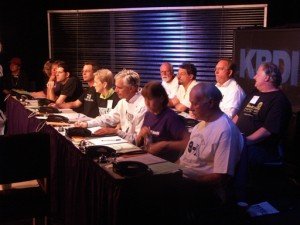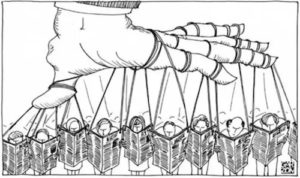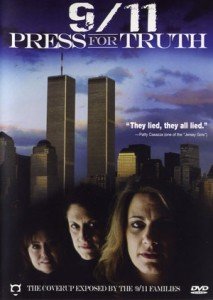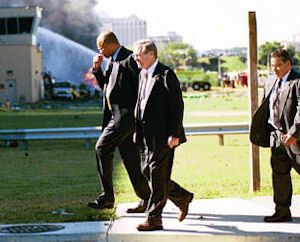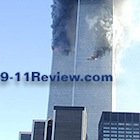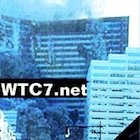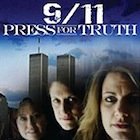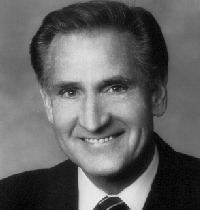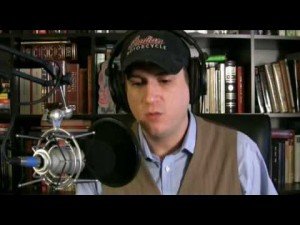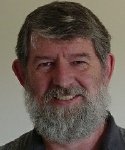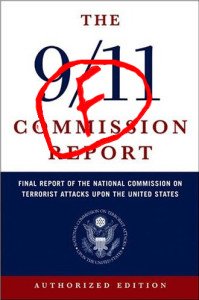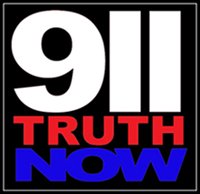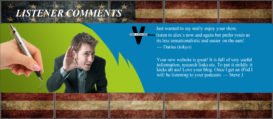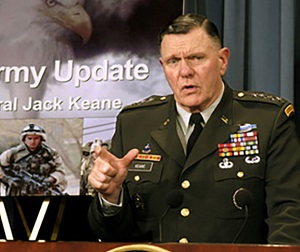
General John M. “Jack” Keane was the most senior Army officer in the United States on September 11, 2001. Working at the Pentagon, he was ideally placed to respond promptly and effectively to the terrorist attacks that day. And yet he appears to have done alarmingly little while the attacks were underway.
The only action he has recalled taking after learning about the crashes at the World Trade Center was ordering that the Army Operations Center (AOC) at the Pentagon be brought up to full manning. He apparently did not order the activation of the Army’s Crisis Action Team (CAT), even though this was designed for dealing with emergencies like the one taking place at the time.
When the Pentagon was hit, more than 50 minutes after the attacks began, Keane initially spent time helping people get out of the building–a task that anyone could have performed–instead of carrying out his duties as head of the Army. He only went to the AOC, a facility that was ideally equipped for dealing with the crisis, when one of his staffers pointed out that he should “leave the recovery to other people” and go and “take command of the Army.”
We need to consider why Keane, despite being an experienced military man, apparently performed very poorly in response to the crisis on September 11. Was his inaction due to incompetence or was there a more sinister reason for it? Might he have been confused because he mistook actual events for simulations, as part of a training exercise? Might he even have been to some degree complicit in what happened and so his inaction was intended to help ensure that the military was unable to stop the attacks before the targets were hit?
Keane was one of a number of key officials who surely had essential duties to perform in coordinating the military’s response to the 9/11 attacks but failed to get properly involved in responding to the crisis until it was too late to make a difference to the outcome of the attacks. His actions on September 11, though, have so far avoided serious scrutiny. We therefore need to examine what he did, and what he failed to do, while the attacks were underway.
ARMY CHIEF OF STAFF WAS OUT OF THE COUNTRY ON SEPTEMBER 11
Jack Keane was vice chief of staff of the U.S. Army–the Army’s second-highest-ranking officer–from 1999 to 2003. On September 11, however, General Eric Shinseki, chief of staff of the U.S. Army, was out of the country attending the Pacific Armies Management Seminar, a conference in Kuala Lumpur, Malaysia. [1] This meant Keane was the highest-ranking Army officer in the U.S. that day and presumably served as the acting chief of staff of the Army while Shinseki was away. [2] He would therefore likely have been responsible for taking charge of the Army’s response to the terrorist attacks in New York and at the Pentagon, and his actions would surely have had a significant impact on how effectively the Army performed.
The Army in fact had a unique and important role to play on September 11. As “executive agent” for the Department of Defense, it was responsible for coordinating with the Navy and the Air Force on “proposed action to support civilian authorities during emergencies involving mass casualties,” according to the Defense Department’s book about the Pentagon attack. [3] It was presumably, therefore, particularly important that Keane acted promptly and effectively in response to the attacks.
KEANE IMMEDIATELY THOUGHT THE FIRST CRASH WAS AN ATTACK
Keane was at the Pentagon–the headquarters of the Department of Defense–on the morning of September 11. This was probably an ideal location from which to respond to the 9/11 attacks. And yet descriptions of his actions indicate that his reaction to the crisis was far less adequate than we might reasonably expect.
He was in his office when the attacks began and was promptly alerted to the first crash at the World Trade Center. American Airlines Flight 11 flew into the North Tower at 8:46 a.m. and CNN started reporting the incident at 8:49 a.m. Apparently very shortly after this, a member of his staff ran into the room and said, “Sir, something terrible is going on in New York.” She turned on the television and Keane then saw the reports stating that a plane had hit the Trade Center.
Keane has recalled that, unlike many people, he realized right away that the incident was a terrorist attack. Noticing that it was a cloudless day, he thought, “Nobody could ever hit the World Trade Center on a day like that by accident.” He also remembered that the Trade Center had been the target of a terrorist attack before, with a bomb going off in the underground parking garage there in February 1993. Therefore, he has commented, “I knew instinctively it had to be a terrorist attack and said as much.”
In response to the event, he called General Peter Chiarelli, the Army’s director of operations, readiness, and mobilization, who was also at the Pentagon that morning, and ordered him to bring the Army Operations Center up to full manning. [4] The AOC, located in the Pentagon basement, was normally staffed by 35 to 40 men, but during a crisis the number of people working there would be significantly increased. [5]
The AOC was “the Army’s command and control center,” Chiarelli has commented. [6] And yet, while Chiarelli headed to it after Keane called him, Keane remained in his office at that time. Even after he saw the second hijacked plane–United Airlines Flight 175–crashing into the World Trade Center on television, at 9:03 a.m., he stayed where he was.
OFFICERS DISCUSSED EVACUATING BUILDINGS IN WASHINGTON
At some point after the second attack in New York occurred but before 9:37 a.m., when the Pentagon was hit, Chiarelli called Keane from the AOC. He reported that the Operations Center was fully manned and alerted Keane to a suspicious aircraft that had been noticed flying toward Washington, DC.
He said he was monitoring Federal Aviation Administration communications and, Keane recalled, had learned that “a plane that took off from Washington, DC, had turned around in the vicinity of Ohio and approached DC from the south along I-95 before turning east, short of the city, and then south again.” (He was presumably referring to American Airlines Flight 77, the plane that supposedly crashed into the Pentagon.) “We were obviously aware then that there was a plane targeting Washington,” Keane has commented.
Keane and Chiarelli started discussing the procedures for evacuating buildings in the capital. But then the Pentagon was hit. Keane felt his office shake violently, even though it was located far from the crash site, and, he recalled, the office “immediately” began to fill with smoke. He alerted Chiarelli to the incident right away. “Pete, that plane [that was approaching Washington] just hit us,” he said.
Even then, however, Keane apparently issued no orders or did anything else to help protect America and prevent further attacks. Instead, he recalled, he told Chiarelli “to tell the U.S. Army around the world what happened [at the Pentagon] and that, given the status of the AOC, which was unharmed, we would still maintain command and control of the Army.”
KEANE WENT TO HELP AT THE CRASH SITE
Keane told his staffers to evacuate at that time. But he stayed inside the Pentagon himself, keeping just his executive officer and his aide with him. However, rather than heading to the AOC, where he could have helped the Army respond to the crisis, he went toward the scene of the attack. “Let’s go on down there and see if we can help some of these people,” he told his aide and his executive officer.
The three men made it to about 100 yards from the crash site, where they found the smoke becoming thicker. From there, they helped Pentagon employees get out of the building–“making sure they know what to do and where they’re going, and that sort of thing,” Keane described.
Keane has not said exactly how much time they spent doing this. But after “a while,” his executive officer told him the three men needed to go to the AOC, from where Keane could “take charge of the Army.” Keane agreed and he then went to the Operations Center with his two colleagues. [7]
Other senior Army leaders also went to the AOC after the Pentagon was hit. [8] The Operations Center became “a focal point for all Pentagon activities,” according to Lieutenant Colonel Richard Kotch, an AOC staffer. [9]
Personnel there worked throughout the attacks and their aftermath. [10] They “assured continuity of operations” after the Pentagon was hit, Kotch recalled. [11] They reportedly “spent much of 9/11 manning the phones; opening secure communications channels to the Army chief of staff, the National Command Authority, and the other Pentagon-based operation centers; and assessing the local and international situation for the senior command.” [12] Keane stayed in the Operations Center until around 11:00 p.m. that night. [13]
KEANE SHOULD HAVE GONE TO THE OPERATIONS CENTER AFTER THE FIRST CRASH
Analysis of Jack Keane’s actions highlights numerous oddities around how the Army vice chief of staff reacted to the 9/11 attacks, which we need to examine. An important question to consider is why Keane remained in his office after he learned of the first crash, even though he would surely have been much better able to organize a response to the crisis in the Army Operations Center.
Keane recognized immediately that an attack was underway when he learned that a plane had hit the World Trade Center. “I sensed it instinctively what had happened, that this was a terrorist act,” he recalled. [14] He should presumably, therefore, have realized that he needed to respond quickly and effectively, in case more attacks were imminent–as indeed turned out to be the case.
And since the Army was the Department of Defense’s “executive agent” for providing support to civilian authorities during disasters involving mass casualties–like the one that had just occurred in New York–he should presumably have gone immediately to the most suitable location for organizing Army assistance in response to the crash.
The AOC seems to have been the logical place for Keane to have gone to, where he could have most effectively carried out his duties as acting Army chief of staff. It was “the place that people will migrate” to during an emergency, according to General Clyde Vaughn, the Army’s deputy director of operations, readiness, and mobilization. Keane would presumably, therefore, have been surrounded by colleagues there, who could have helped him respond to the attacks. [15]
The facility was equipped with state-of-the-art communications equipment and television sets for monitoring news coverage. It also had four giant screens on the wall on which personnel were “monitoring all the activities that took place that day,” Keane described. And there was a “watch team” there that monitored the world constantly.
Keane surely needed to closely follow what was happening after he learned of the first crash, so he could immediately deal with the crisis and promptly respond to any additional emergencies if they arose. In the AOC, he would have had the resources necessary to do this. But, by staying in his office, he limited his capabilities.
Furthermore, there was an “emergency action console” in the AOC that was “equipped with a sophisticated communications system that [allowed] the watch team instantaneous connections at the touch of a computer button to the White House, secretary of defense’s office, and Army commands around the world,” according to the Washington Post. [16] Soldiers magazine reported that the watch team could direct “hundreds of communications daily to the FBI, the State Department, the White House command center, local law enforcement agencies, and others.” The watch team was therefore “the central point of contact during emergencies.” [17]
With such invaluable resources available at the facility, Keane would have been ideally positioned in the AOC to communicate with other senior officials and help them organize a response to the terrorist attacks. And yet, even when the Pentagon was hit, more than 50 minutes after the first attack took place, he did not initially go there.
KEANE WAS ADVISED TO GO TO THE OPERATIONS CENTER TO ‘TAKE CHARGE OF THE ARMY’
Instead, at that time, he headed toward the crash site, intending to assist people there. Along with his executive officer and his aide, he then spent time making sure that people were able to get out of the Pentagon.
This course of action was inexplicable. There would have been plenty of people at the Pentagon who could have helped personnel find their way out of the building and so it was unnecessary for a top official like Keane to get involved with the task. But as the most senior Army officer in the country that day, Keane was irreplaceable and there were presumably specific duties he was required to carry out. While he was busy helping people evacuate, he would have been unable to carry out these duties.
Keane’s executive officer recognized the problem. At some point, he told Keane: “Look, you’ve got to take charge of the Army, so let’s get to the Operations Center. We’ll leave the recovery to other people.” Strangely, Keane appears to have recognized the inappropriateness of his own response to the Pentagon attack. Referring to his executive officer’s advice, he commented, “Of course, I knew immediately that he was right and [so] we joined my staff in the AOC.” [18]
Once he reached the Operations Center, Keane provided “leadership and guidance” to the personnel there, according to a report published by the Army. [19] But surely he should have provided leadership and guidance from the outset, by going to the AOC immediately after he learned of the first crash.
KEANE WAS APPARENTLY UNCONCERNED FOR HIS OWN SAFETY
Keane’s decision to stay in his office after he heard about the first crash and determined immediately that it was a terrorist attack is also puzzling because Keane should surely have realized that, if America was under attack, the Pentagon was a likely target.
Indeed, numerous individuals who were at the Pentagon that morning have recalled being concerned that their building might be attacked. For example, after they learned about the first crash at the World Trade Center, Captain William Toti, special assistant to the vice chief of naval operations, and his colleagues started discussing whether there could be more attacks and, if there were, what the targets would be. Toti concluded, “The only building that makes sense is the Pentagon” and, “If [the terrorists] hit any place, they are going to hit this building.” [20]
Similarly, after he saw the second crash on television, Peter Chiarelli told a colleague, “If there are other aircraft up there that have been hijacked or if there are other aircraft getting ready to do this, this building [i.e. the Pentagon] has got to be a target.” [21]
Keane should surely have assumed from the outset that the Pentagon might be attacked. He should therefore have made his own safety a priority, so he would still be able to carry out his duties if it was hit.
And yet, by staying in a vulnerable and exposed area of the Pentagon, he failed to do this. His office was on the third floor of the building’s outer ring. [22] If terrorists attacked that area of the Pentagon, perhaps by crashing an aircraft into it or detonating a truck bomb outside of it, Keane could have been seriously injured or killed. He should have realized that he would be much safer in the AOC, which was on the lowest level of the Pentagon, inside a bunker reinforced by steel and concrete, 60 feet below the parking lot. [23]
Keane stayed in his office after he saw the second plane crashing into the World Trade Center on television, even though it became clear then that the crisis involved more than an attack on just a single target. The possibility of the Pentagon being hit–and the need to go to a safer location–should have seemed increasingly great to him at that point.
Keane’s decision to stay in his office until after the Pentagon attack occurred is particularly astonishing considering that when Chiarelli called, before the Pentagon was hit, he told Keane a suspicious aircraft had been noticed flying toward Washington. Keane even seems to have thought at the time that this aircraft might be heading toward the Pentagon. He recalled that he and Chiarelli were “concluding it’s heading for a building someplace in Washington,” and he asked Chiarelli: “What’s the plan to evacuate this building [i.e. the Pentagon]? Why isn’t it being evacuated?”
And yet he did not hurry out of his office, in case the approaching aircraft crashed into the part of the building he was in. Instead, he remained on the phone and was still talking with Chiarelli when the Pentagon was struck. “Right during that conversation, the plane hit the building; it was quite amazing,” he has commented. [24]
It is remarkable too that, in light of the possibility of the Pentagon being attacked, Keane made no attempt to send his staff to somewhere more secure. Surely, just as he should have ensured his own safety, he should have taken action to ensure the safety of his staffers. And yet he did nothing before the Pentagon was hit.
After the Pentagon attack occurred, almost all Army personnel at the Pentagon evacuated the building. [25] Only at that time did Keane order his staffers, “Call your homes right now and make sure everybody knows you’re alright, and then I want you to all to leave the building immediately.” [26] By then, however, it was too late. If the area of the Pentagon in which they worked had been hit, members of Keane’s staff could have been killed or seriously injured.
KEANE APPARENTLY FAILED TO ACTIVATE THE CRISIS ACTION TEAM
An aspect of Jack Keane’s behavior on September 11 that may be particularly significant was Keane’s apparent failure to activate the Army’s Crisis Action Team at the Pentagon.
The CAT, according to author Robert Rossow, was “an organization of subject matter experts from throughout the Army” who would be “called to the AOC to man their battle stations when the CAT is activated.” [27] It had “a dedicated ‘hot’ desk with classified and unclassified computers, and secure telephones for 24 separate Army staff sections,” according to Soldiers magazine. [28]
Keane, as the most senior Army officer in the U.S., should presumably have arranged for it to be activated as soon as possible on the morning of September 11, so the team could promptly respond to the attacks. He could perhaps have ordered Peter Chiarelli–who oversaw operations in the AOC–to activate it when he called him after he learned of the first crash. And yet the only action he took at that time, according to his own recollections, was to order Chiarelli to bring the AOC up to full manning.
Chiarelli, in contrast, appears to have recognized right away the importance of activating the CAT, since he activated it of his own accord, apparently shortly after Keane called him. (Curiously, he made no mention of having any phone calls with Keane when he was interviewed by a military historian about his experiences on September 11, so the exact sequence of events is difficult to determine.)
Chiarelli, according to his own recollections, started watching the coverage of the first crash at the World Trade Center at around 9:00 a.m. on September 11 on the television in his office, where he had been preparing to go to a meeting. Although he has said it was “unclear” to him at that point whether the crash was “a terrorist action,” he realized that the incident was “a really serious situation.” He therefore called Lieutenant Colonel Kevin Stramara–his chief of operations, who was responsible for the CAT–into his office.
After Stramara entered, Chiarelli said to him, “We need to look at standing up a CAT because I believe we’ve got ourselves a possibility of a mass casualty [incident].” He told Stramara, “It’s time to activate the CAT” and instructed him, “Get it set up.” [29] Chiarelli explained, in a phone call later that morning, that he had activated the CAT “to respond to the contingency in New York if requested by state and local officials,” because he had “anticipated that the World Trade Center disaster would require enormous rescue, firefighting, and recovery efforts.” [30]
KEANE HAD INCREASED POWERS IN THE HOURS AFTER THE ATTACKS
Keane, evidence suggests, failed to take any significant action in response to the 9/11 attacks while they were taking place. However, as a result of certain anomalous circumstances, he had a lot of power in the crucial hours after the attacks.
The chief of staff of the U.S. Army in 2001 was Eric Shinseki. However, as previously noted, Shinseki was in Malaysia on September 11, for a conference of the chiefs of staff of Pacific nation armies. [31] He was promptly alerted to the news that a plane had crashed into the World Trade Center and, when he then saw the second crash live on television, realized it was a terrorist attack. But since he was on the other side of the world to where the attacks occurred, he was only able to participate in the military’s response to the crisis over the phone.
Most of the senior U.S. Army delegation in Malaysia prepared to head immediately back to America. However, on top of the long time it would take to fly to the United States, their journey was delayed because U.S. airspace was closed in response to the attacks. [32] Shinseki appears to have therefore only arrived in Washington, where he could resume his duties as Army chief of staff, on the night of September 12. [33] While he was away, Keane, as his second in charge, would presumably have carried out these duties.
Another key official whose circumstances led to Keane having increased power in the hours following the attacks was Thomas White. As secretary of the Army, White was the top civilian leader for the U.S. Army, and was responsible for the effective and efficient functioning of the Army. [34] He was also the “top executive agent in the Pentagon hierarchy,” the “coordinator of continuity for the Pentagon,” and the “middleman for military support to civil authorities,” according to military expert and author William Arkin. [35] However, due to an apparent mishap, he was away from Washington for several hours on September 11.
White was at the Army Navy Country Club in Arlington, Virginia, where he had been scheduled to give a speech, when the Pentagon was hit and so, like Keane, he only arrived at the Army Operations Center sometime after the Pentagon attack took place. [36] Like Keane, he then provided “leadership and guidance” to the personnel in the AOC. [37]
However, after he spent some time in the Operations Center, he was ordered to go to Raven Rock, a secure complex of buildings outside Washington. [38] He objected to being sent away from the Pentagon. But the officer in charge of the relocation and continuity of operations plan had explained to Peter Chiarelli–the man who told White he had to go: “[White] has no choice at this time. This has been directed and he must immediately proceed to leave here.” When Chiarelli asked the officer if he was certain of this, he replied, “Yes, I’m sure.”
And yet the decision to send White to Raven Rock turned out to be a mistake. “We found out that it wasn’t required for him to leave at that particular point in time, because the level of evacuation did not reach his level,” Chiarelli explained. The person who said White had to leave “had misspoke over the phone,” Chiarelli added. White was consequently allowed to return to the Pentagon about four hours after he left it. [39] But while he was away, Arkin noted, Keane was “in charge of the Army (and of decisions relating to military support to civil authorities).” [40]
OTHER KEY OFFICIALS FAILED TO CARRY OUT THEIR DUTIES
While Keane’s apparent lack of response to the 9/11 attacks may seem alarming, the Army vice chief of staff was in fact one of several key officials responsible for running the U.S. military whose actions meant they were unable to carry out their duties while the attacks were taking place.
These officials included Secretary of Defense Donald Rumsfeld, who, after learning about the crashes at the World Trade Center, insisted on continuing with a routine intelligence briefing. Then, after the Pentagon was hit, instead of helping the military respond to the crisis, he initially went to the crash site, simply to inspect the damage and help carry a stretcher. [41]
Meanwhile, General Montague Winfield should have been on duty as the deputy director for operations in charge of the National Military Command Center at the Pentagon on the morning of September 11. However, he remained in a routine “personnel meeting,” which apparently commenced before the attacks began, until sometime after the Pentagon was hit. While he was in the meeting, a colleague had to carry out his duties. [42]
And General Ralph Eberhart, the commander of the North American Aerospace Defense Command (NORAD), decided to drive from his office at Peterson Air Force Base, Colorado, to the NORAD operations center in Cheyenne Mountain in the middle of the attacks, even though he knew there were “dead spots” in which he would be out of phone coverage for five to 10 minutes at a time during the journey. Consequently, he was out of communication with other officials for about 45 minutes at this critical time, while he traveled between the two locations. [43]
KEANE ISSUED FEW ORDERS DURING THE ATTACKS
Since Jack Keane, as the most senior Army officer in the country, was such a key figure in the U.S. military on September 11, it is alarming to find, upon close scrutiny, that his behavior while the terrorist attacks took place that day appears so suspicious. He seems to have done remarkably little to protect his country at a time when he should surely have assumed that his prompt action might help make the difference between further attacks succeeding or being stopped.
Important questions therefore need to be addressed. We need to know, for example, what exactly Keane’s responsibilities were on September 11. What actions should Keane have taken in response to the attacks? And, in light of his responsibilities, what exactly did he do and what duties did he fail to carry out?
We need to know what orders Keane issued while the attacks were underway. The only ones we know of, based on his recollections, were that the Army Operations Center be brought up to full manning and, after the Pentagon was hit, that his immediate staff should evacuate the building. Were these the only orders he gave?
More specifically, why did Keane apparently fail to order Peter Chiarelli to activate the Crisis Action Team and instead just tell him to bring the AOC–where the members of the CAT would assemble in an emergency–up to full manning? As acting chief of staff of the Army, activating the CAT may have been one of his responsibilities that day. And yet it appears that, after Keane called him following the first crash, Chiarelli arranged to have the CAT activated on his own initiative, rather than based on an order from his superior.
Eric Shinseki–the actual Army chief of staff in September 2001–has indicated that he understood the importance of activating the CAT. Even though he was out of the country when the attacks occurred, after he saw the second crash on television, he recalled, he “gave instructions for the Army staff to stand up the Crisis Action Team.” [44] If Shinseki recognized the need to promptly activate the CAT, why was Keane apparently unable to do so?
KEANE’S ACTIONS AFTER THE SECOND CRASH ARE UNKNOWN
Another issue to address regards the lack of available information about Keane’s actions in the half-hour or so after the second crash at the World Trade Center occurred.
Keane has described calling Chiarelli after he learned of the first crash and then seeing the second crash on television. That crash took place at 9:03 a.m., almost 35 minutes before the Pentagon was attacked. The next thing Keane has described doing is talking to Chiarelli again, when the officer called to let him know the AOC was fully manned and a suspicious aircraft had been noticed flying toward Washington. That call, though, appears to have begun shortly before the Pentagon was hit, since the two men were still talking to each other when the Pentagon attack occurred.
Keane’s recollections, therefore, appear to leave about half an hour unaccounted for. What, then, did Keane do during this critical period, immediately after the second attack took place?
We also need to consider why Keane was apparently so unconcerned for his safety and for the safety of his staff after he learned of the first crash, considering that he immediately realized the incident was a terrorist attack. Surely, as previously mentioned, if the U.S. was under attack, the Pentagon–as a prominent symbol of American power–should have been considered a likely target. And, located on the third floor of the outer ring, Keane’s office was presumably in one of the most exposed and vulnerable areas of the building.
And yet Keane made no attempt to leave there and go to somewhere safer–such as the AOC–until after the Pentagon was attacked. And he only ordered his immediate staff to evacuate after the building was hit. [45]
We need to know if there was a particular person who was responsible for Keane’s safety. If there was, who was this individual? Surely, such a person should have made sure that Keane was promptly taken from his office to somewhere more secure in response to the attacks on the World Trade Center. Why, then, did they fail to do so?
DID KEANE HELP PLAN THE ATTACKS?
What was the reason for Jack Keane’s inaction while the 9/11 attacks were underway, when Keane should have been going out of his way to help the military respond to the crisis? Was Keane’s poor performance simply due to incompetence or is there a more disturbing explanation for it?
For example, might Keane have been confused because he thought information he received about the attacks was simulated, as part of a training exercise? Chiarelli has recalled that, on September 11, the Army was preparing an exercise for the CAT, which would be based around the scenario of a plane crashing into the World Trade Center. Although this exercise was scheduled to take place in the week after 9/11, it was a “no-notice exercise,” which means its participants were not told beforehand exactly when it would occur. [46] Army personnel, including Keane, might therefore have mistakenly thought the exercise was taking place on September 11 when they learned a plane had crashed into the World Trade Center that day.
Another possibility, which, though unsettling, needs to be considered is that Keane was in some way complicit in planning and carrying out the attacks. His failure to take effective action on the morning of September 11 might plausibly have been because he intended to help ensure that the attacks succeeded and the military was unable to intervene before the targets were hit. If this was the case, it would mean a group other than al-Qaeda was behind 9/11. Instead, the attacks might have been perpetrated by rogue individuals in the U.S. military and other government agencies.
If Keane was involved in planning the attacks, he would presumably have known which part of the Pentagon would be hit and he would therefore have known that, along with his colleagues, he would be safe in his office on the morning of September 11. If he had such foreknowledge, this fact could explain why he was apparently so unconcerned for his own safety before the Pentagon attack took place.
Keane was an important and powerful figure on September 11. And yet little has been revealed about what he did when the 9/11 attacks occurred and his behavior that day has avoided serious examination. He is therefore one of a number of senior military and government officials whose responses to the attacks ought to be the subject of particular scrutiny in a new investigation of 9/11.
NOTES
[1] “Army Officers Hold Meeting.” Honolulu Advertiser, September 10, 2001; Christopher N. Koontz, Department of the Army Historical Summary, Fiscal Year 2001. Washington, DC: Center of Military History, United States Army, 2011, p. 55; Lindsey M. Elder, “Former CSA Reflections on 9/11 Attacks.” U.S. Army, September 10, 2016.
[2] Keane has not explicitly stated that he was the acting chief of staff of the Army on September 11. However, evidence indicates that because Shinseki was out of the country, he would have performed this role. Specifically, General Richard Myers, vice chairman of the Joint Chiefs of Staff at the time, has explained how, because General Henry Shelton, the chairman of the Joint Chiefs of Staff, was away from the country on the morning of September 11, he was the acting chairman of the Joint Chiefs of Staff when the 9/11 attacks occurred. “Shelton was airborne on his way to Europe for a NATO meeting and couldn’t be back for hours,” Myers wrote. Therefore, he continued, “By law, as vice chairman, I was designated acting chairman of the Joint Chiefs during his absence.” Presumably, Shinseki’s absence on September 11 similarly meant Keane was designated, by law, as the acting chief of staff of the Army that day. See Richard Myers with Malcolm McConnell, Eyes on the Horizon: Serving on the Front Lines of National Security. New York: Threshold Editions, 2009, p. 10.
[3] Alfred Goldberg et al., Pentagon 9/11. Washington, DC: Historical Office, Office of the Secretary of Defense, 2007, p. 134. See also Department of Defense Directive 3025.1: Military Support to Civil Authorities (MSCA). Washington, DC: Department of Defense, January 15, 1993.
[4] Jack Keane, “My 9/11: A Personal Reflection by General Jack Keane, Former Vice Chief of Staff of the U.S. Army.” Fordham Magazine, September 10, 2016; Jim Swift, “Gen. Jack Keane Remembers 9/11.” Weekly Standard, September 11, 2016; “Mike Siegel 9-11-16.” Mike Siegel Show, WRKO, September 11, 2016.
[5] Mike Williams, “Call Saved Rice Professor on 9/11.” Rice News, September 9, 2011.
[6] William Schwab and Lorie Jewell, “The Army’s Nerve Center.” Soldiers, September 2004.
[7] Jack Keane, “My 9/11”; Jim Swift, “Gen. Jack Keane Remembers 9/11”; “Mike Siegel 9-11-16.”
[8] Robert Rossow III, Uncommon Strength: The Story of the U.S. Army Office of the Deputy Chief of Staff for Personnel During the Attack on the Pentagon, 11 September 2001. Washington, DC: Department of the Army, Office of the Deputy Chief of Staff, 2003, p. 67.
[9] Robert A. Cohn, “Remembering the ‘First Yahrzeit’ of 9/11.” St. Louis Jewish Light, September 18, 2013.
[10] Pete Chiarelli, interview by Frank Shirer. U.S. Army Center of Military History, February 5, 2002; Christopher N. Koontz, Department of the Army Historical Summary, Fiscal Year 2001, p. 56.
[11] Robert A. Cohn, “Cohnipedia: 9/11’s Tenth Yahrtzeit.” St. Louis Jewish Light, September 8, 2011.
[12] Mike Williams, “Call Saved Rice Professor on 9/11.”
[13] Jack Keane, “My 9/11”; Jim Swift, “Gen. Jack Keane Remembers 9/11.”
[14] Jim Swift, “Gen. Jack Keane Remembers 9/11.”
[15] Clyde Vaughn, interview by Stephen Lofgren. U.S. Army Center of Military History, February 12, 2002.
[16] Steve Vogel, “Crew in Pentagon Bunker is Army’s Eyes and Ears: Watch Covers all From Crises to Baby-Sitting.” Washington Post, October 14, 1995; Pete Chiarelli, interview by Frank Shirer; “Gen. Jack Keane Describes Being in the Pentagon on 9/11.” Fox News, September 11, 2016.
[17] William Schwab and Lorie Jewell, “The Army’s Nerve Center.”
[18] Jack Keane, “My 9/11”; Jim Swift, “Gen. Jack Keane Remembers 9/11”; “Mike Siegel 9-11-16.”
[19] Christopher N. Koontz, Department of the Army Historical Summary, Fiscal Year 2001, p. 56.
[20] William Toti, interview by Mike McDaniel. U.S. Naval Historical Center, October 10, 2001.
[21] Pete Chiarelli, interview by Frank Shirer.
[22] Bob Woodward, State of Denial: Bush at War, Part III. New York: Simon & Schuster, 2006, p. 141.
[23] Steve Vogel, “Crew in Pentagon Bunker is Army’s Eyes and Ears”; “Mike Siegel 9-11-16.”
[24] Jack Keane, “My 9/11”; Jim Swift, “Gen. Jack Keane Remembers 9/11.”
[25] Christopher N. Koontz, Department of the Army Historical Summary, Fiscal Year 2001, p. 56.
[26] Jim Swift, “Gen. Jack Keane Remembers 9/11.”
[27] Robert Rossow III, Uncommon Strength, p. 64.
[28] William Schwab and Lorie Jewell, “The Army’s Nerve Center.”
[29] Pete Chiarelli, interview by Frank Shirer; Robert Rossow III, Uncommon Strength, p. 65.
[30] Alfred Goldberg et al., Pentagon 9/11, p. 134.
[31] Christopher N. Koontz, Department of the Army Historical Summary, Fiscal Year 2001, p. 55.
[32] Richard Halloran, My Name is … Shinseki … and I am a Soldier. Honolulu, HI: Hawaii Army Museum Society, 2004, p. 51; Lindsey M. Elder, “Former CSA Reflections on 9/11 Attacks.”
[33] Pete Chiarelli, interview by Frank Shirer.
[34] General Orders No. 3: Assignment of Functions and Responsibilities Within Headquarters, Department of the Army. Washington, DC: Headquarters, Department of the Army, July 9, 2002.
[35] William M. Arkin, American Coup: How a Terrified Government is Destroying the Constitution. New York: Little, Brown and Company, 2013, p. 176.
[36] Pete Chiarelli, interview by Frank Shirer; Thomas White, interview by PBS, Rumsfeld’s War. PBS, August 12, 2004; Alfred Goldberg et al., Pentagon 9/11, p. 135.
[37] Christopher N. Koontz, Department of the Army Historical Summary, Fiscal Year 2001, p. 56.
[38] Alfred Goldberg et al., Pentagon 9/11, p. 135; William M. Arkin, American Coup, p. 176.
[39] Pete Chiarelli, interview by Frank Shirer.
[40] William M. Arkin, American Coup, p. 176.
[41] “Secretary of Defense Donald Rumsfeld ‘Deserted His Post’ While America Was Under Attack on 9/11.” Shoestring 9/11, May 25, 2017.
[42] “The Repeatedly Delayed Responses of the Pentagon Command Center on 9/11.” Shoestring 9/11, November 7, 2010; “Profile: Montague Winfield.” History Commons, n.d.
[43] “The Actions and Inactions of the Commander in Charge of the U.S. Air Defense Failure on 9/11.” Shoestring 9/11, June 18, 2010; “Profile: Ralph Eberhart.” History Commons, n.d.
[44] Lindsey M. Elder, “Former CSA Reflections on 9/11 Attacks.”
[45] Jack Keane, “My 9/11”; Jim Swift, “Gen. Jack Keane Remembers 9/11”; “Mike Siegel 9-11-16.”
[46] Stephen J. Lofgren (Editor), Then Came the Fire: Personal Accounts From the Pentagon, 11 September 2001. Washington, DC: Center of Military History, United States Army, 2011, pp. 95-97; “Army Command Center at the Pentagon Planned to Hold Exercise in Week After 9/11 Based on a Plane Hitting the WTC.” Shoestring 9/11, March 26, 2011.

